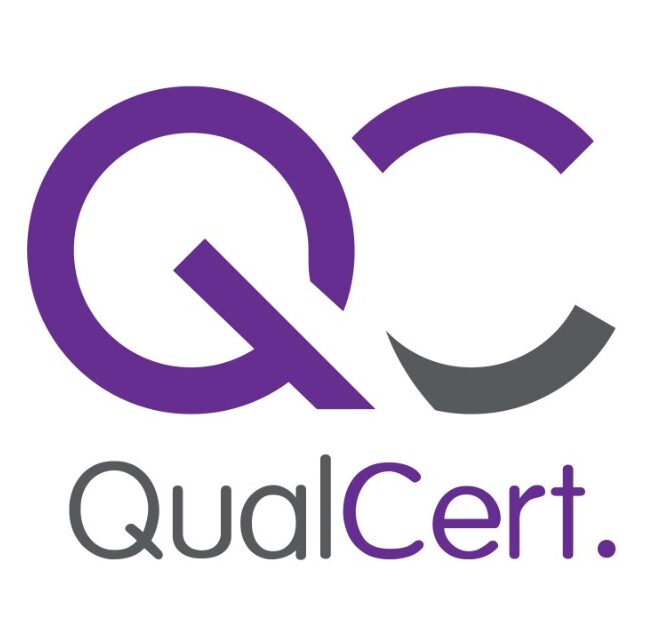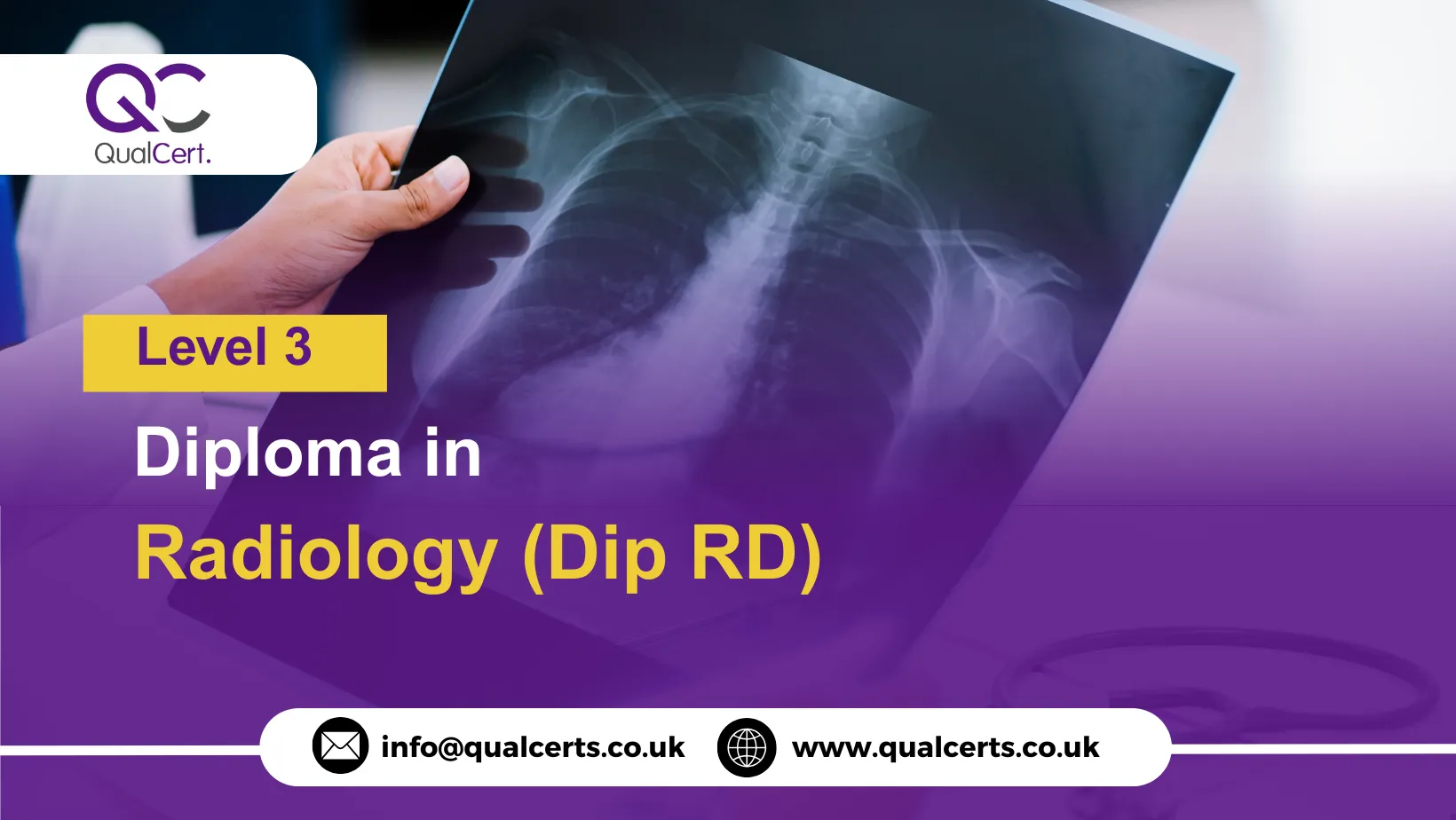Radiology is a vital branch of healthcare that focuses on the use of imaging techniques to diagnose and manage a wide range of medical conditions. With the rapid advancement of imaging technologies, the demand for skilled professionals in radiology has grown significantly. The QualCert Level 3 Diploma in Radiology (Dip RD) is designed to provide learners with a comprehensive understanding of radiological principles, imaging techniques, and clinical applications.
The QualCert Level 3 Diploma in Radiology (Dip RD) equips learners with the knowledge and skills necessary to work effectively in clinical and diagnostic settings. This course is ideal for healthcare professionals, including radiographers, medical assistants, nurses, and allied health practitioners, who wish to specialise in diagnostic imaging. The curriculum combines theoretical knowledge with practical applications, preparing learners to support patient diagnosis, treatment planning, and safe imaging practices in hospitals, clinics, and diagnostic centres.
The QualCert Level 3 Diploma in Radiology (Dip RD) is suitable for healthcare professionals seeking to specialise in diagnostic imaging. It is ideal for radiographers, nurses, medical assistants, and allied health professionals who wish to gain internationally recognised qualifications in radiology. The course is also suitable for individuals aiming to improve patient outcomes, support diagnostic teams, and advance their careers in hospitals, clinics, or diagnostic centres.
Completing the QualCert Level 3 Diploma in Radiology provides learners with the skills and knowledge to work confidently in diagnostic imaging and radiology support roles. Graduates can contribute to accurate diagnosis, effective treatment planning, and safe imaging practices while enhancing their career prospects in healthcare.
The QualCert Level 3 Diploma in Radiology offers a comprehensive pathway for healthcare professionals wishing to specialise in diagnostic imaging. By combining theoretical knowledge, practical skills, and professional standards, this diploma prepares learners to deliver high-quality radiology support and advance their careers in the healthcare sector.
Course Contents of QualCert Level 3 Diploma in Radiology (Dip RD):
The QualCert Level 3 Diploma in Radiology (Dip RD), offers 60 Credits, requiring a Total Qualification Time (TQT) of 300 hours, including 210 Guided Learning Hours (GLH).
| Unit Ref# | Unit Title | Credit | GLH | TQT |
| QC27120-1 | Introduction to Radiology and Imaging Principles | 10 | 35 | 50 |
| QC27120-2 | Anatomy, Physiology, and Pathophysiology for Radiology | 10 | 35 | 50 |
| QC27120-3 | Radiographic Techniques and Imaging Modalities | 10 | 35 | 50 |
| QC27120-4 | Patient Care, Safety, and Radiological Procedures | 10 | 35 | 50 |
| QC27120-5 | Radiology Equipment, Technology, and Quality Assurance | 10 | 35 | 50 |
| QC27120-6 | Ethical, Legal, and Professional Practice in Radiology | 10 | 35 | 50 |
Entry Requirements for the QualCert Level 3 Diploma in Radiology (Dip RD):
Minimum Age
- Learners must be at least 18 years old to enrol in this course. This ensures participants have the maturity required to handle clinical environments, patient interaction, and the technical responsibilities of radiology safely and effectively.
Educational Background
- A basic level of education is required, such as a high school diploma or equivalent.
- Prior knowledge or experience in healthcare, anatomy, physiology, or allied health disciplines is preferred but not mandatory. This background supports a better understanding of radiological principles and clinical applications.
Experience
- Previous experience in healthcare, clinical support, or patient care is recommended.
- Practical experience allows learners to apply theoretical knowledge effectively in diagnostic imaging, patient handling, and clinical procedures.
Language Proficiency
- Learners must demonstrate sufficient proficiency in English to understand course materials, complete assessments, and communicate effectively in clinical settings.
- Strong language skills are essential for accurate patient communication, safe practice, and compliance with legal and ethical standards in healthcare and radiology.
Learning Outcomes of QualCert Level 3 Diploma in Radiology (Dip RD):
Introduction to Radiology and Imaging Principles
- Understand the basic principles of medical imaging.
- Recognise the different types of radiological techniques and modalities.
- Explain the role of radiology in diagnosis and treatment planning.
- Understand radiation safety principles and exposure minimisation.
Anatomy, Physiology, and Pathophysiology for Radiology
- Identify anatomical structures relevant to imaging procedures.
- Understand physiological processes affecting imaging interpretation.
- Recognise common pathophysiological conditions visualised in radiology.
- Apply anatomical and physiological knowledge to support accurate imaging.
Radiographic Techniques and Imaging Modalities
- Apply safe and effective radiographic techniques across different imaging modalities.
- Operate imaging equipment under supervision.
- Understand imaging protocols for various diagnostic procedures.
- Evaluate image quality and troubleshoot common issues.
Patient Care, Safety, and Radiological Procedures
- Conduct patient assessments before imaging procedures.
- Provide patient-centred care and communication during radiology procedures.
- Apply infection control and radiation protection measures.
- Monitor patient safety throughout imaging procedures.
Radiology Equipment, Technology, and Quality Assurance
- Understand the operation and maintenance of radiology equipment.
- Apply quality assurance procedures to ensure accurate and safe imaging.
- Recognise technological advancements in imaging modalities.
- Ensure compliance with radiation protection and safety standards.
Ethical, Legal, and Professional Practice in Radiology
- Apply ethical principles in radiology practice.
- Understand legal requirements relating to radiological procedures and patient confidentiality.
- Promote professional behaviour, reflective practice, and effective communication.
- Ensure patient safety, dignity, and quality of care in all imaging procedures.
The QualCert Level 3 Diploma in Radiology is designed for healthcare professionals and learners who wish to specialise in diagnostic imaging and radiology support. This course is suitable for individuals seeking to develop both theoretical knowledge and practical skills in radiological techniques, patient care, and imaging safety.
It is particularly suitable for:
- Radiographers, nurses, medical assistants, and allied health practitioners who wish to specialise or enhance their skills in diagnostic imaging.
- Healthcare staff seeking internationally recognised qualifications to advance their career in hospitals, clinics, or diagnostic centres.
- Professionals aiming to improve patient outcomes by supporting accurate diagnosis, treatment planning, and safe imaging practices.
- Individuals preparing for further studies in radiology, medical imaging, or related healthcare disciplines.
The course ensures learners acquire a strong foundation in radiology principles, imaging techniques, patient-centred care, and professional standards, equipping them to contribute effectively to clinical and diagnostic teams.
Centre Requirements for QualCert Level 3 Diploma in Radiology (Dip RD)
To deliver the Level 3 Diploma in Radiology effectively, training centres must meet the following requirements to ensure high-quality learning, safety, and compliance with professional standards:
Qualified Teaching Staff
- Centres must employ trainers and assessors with relevant qualifications and professional experience in radiology, medical imaging, or healthcare practice.
- Staff should possess both theoretical knowledge and practical experience to guide learners through imaging procedures, patient care, and clinical safety.
- Continuous professional development (CPD) should be encouraged to maintain up-to-date knowledge of radiology techniques, equipment, and safety standards.
Learning Resources
- Centres must provide comprehensive learning materials, including textbooks, clinical guidelines, case studies, and access to online resources relevant to radiology.
- Access to simulation tools, imaging software, and role-play materials is recommended to support practical skills development.
- Facilities should enable learners to research, study independently, and engage in interactive learning sessions.
Facilities and Equipment
- Adequate classroom spaces with appropriate seating, lighting, and teaching aids must be available for theoretical instruction.
- Practical training facilities should allow for supervised practice of imaging techniques, patient handling, and equipment operation.
- Centres must comply with health, safety, and radiation protection regulations suitable for radiology training environments.
Assessment and Quality Assurance
- Centres must have systems to conduct assessments, including written assignments, practical demonstrations, and case study evaluations, in line with QualCert standards.
- Records of learner progress, attendance, and assessment outcomes should be maintained securely and accurately.
- Internal quality assurance processes must ensure consistent, reliable, and high-quality delivery of the course.
Administrative Capabilities
- Centres must have administrative systems to manage enrolment, student records, certification, and communications with learners.
- Staff should provide guidance and support to learners throughout the course, including assistance with practical exercises, assignments, and assessments.
Health, Safety, and Radiation Protection Compliance
- Centres must ensure all learning environments meet current health, safety, and radiation protection regulations.
- Practical or simulation sessions must be conducted under supervision to ensure learner and patient safety.
- Centres must have policies in place to protect learners, staff, and any simulated patients during training.
By meeting these requirements, centres can deliver a professional, safe, and effective learning experience, ensuring learners develop the knowledge, practical skills, and professional standards required for competent radiology practice.

